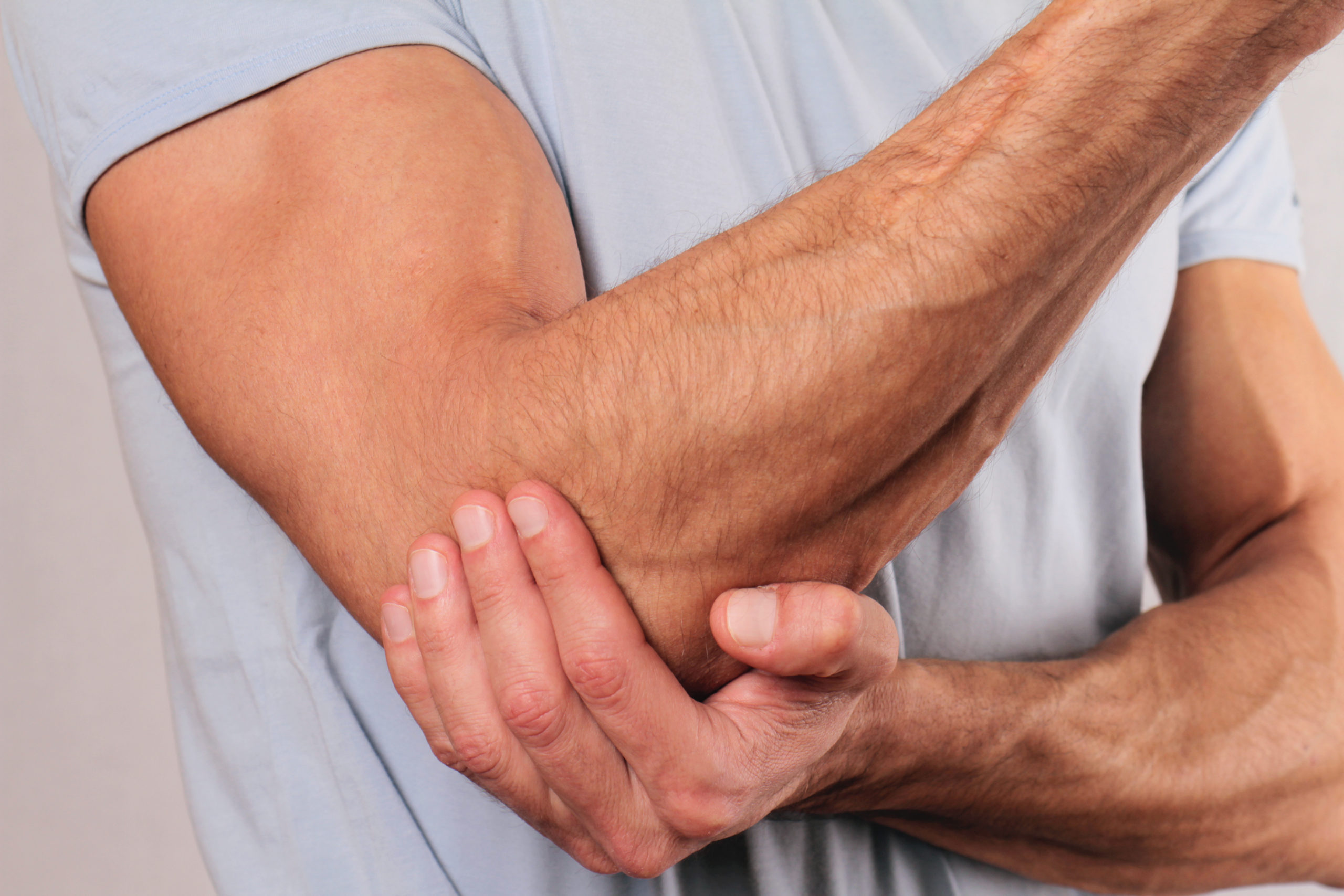Are you experiencing lingering elbow pain? Have you experienced elbow pain in the past and are unsure why? Weakness of your shoulder muscles and upper back stiffness might contribute to your elbow pain. Shoulder weakness and upper back stiffness are common in athletes. And most of us in the general population have the same problems due to frequent sitting. A sedentary lifestyle and a less-than-optimal exercise program likely contribute to your elbow pain.
Tennis Elbow Pain and Shoulder Weakness
Tennis elbow, also known as lateral epicondylitis, is a common tendon disorder that occurs in both tennis players and the general population. People describe pain outside their elbow as aggravated by gripping or lifting activities. Treatment of only the elbow is often unsuccessful or leads to temporary improvements. Common treatments that produce minimal lasting benefits include medications, injections, braces, ultrasound, laser, or electrical stimulation. Often, muscle weakness at the elbow and neighboring areas contributes to the persistent elbow pain. Research suggests an association between posture and shoulder muscle weakness in people with tennis elbow.
Research also shows a link between tennis elbow and muscle strength of the serratus anterior, lower trapezius, and middle trapezius. Poor rotator cuff strength is also linked to tennis elbow. These muscles are important for orienting and positioning the shoulder blade during functional activities involving your arm. Poor strength or endurance of these muscles results in overload to the elbow and wrist muscles. Strengthening the scapular stabilizers is an important part of rehabilitation for patients with tennis elbow. Targeting the middle and lower trapezius muscles using dumbbells lying on your stomach is an excellent starting point.
Baseball Players, Posture, and Elbow Injury
Youth baseball players, ages 6 to 12, with a rounded upper back, are 2.5 times more likely to sustain an elbow injury. Exercises that restore mobility in the thoracic spine and strengthen the muscles of the shoulder blade are important to address these problems. Loss of mobility in the thoracic spine from a rounded back position will limit a baseball player’s ability to achieve the late cocking phase of throwing. Often, these athletes will compensate at their shoulder and elbow to achieve the cocked position. Over time, the increased forces at the elbow will overstress the soft tissue and bone leading to injury and pain. The windmill is a great exercise to improve posture and upper back mobility.
Scapular muscle and rotator cuff weakness is associated with throwing-related elbow and shoulder pain in youth baseball players. Also, baseball players with ulnar collateral ligament injuries show decreased strength of the infraspinatus and subscapularis. Similarly, weakness of the supraspinatus muscle is linked to serious arm injury in high school baseball players. These rotator cuff muscles stabilize the shoulder joint during throwing. Weakness at the shoulder will increase stress further down the chain at the elbow. Baseball players should perform regular arm care exercises that target the scapula and rotator cuff muscles. Examples of these exercises include shoulder external rotation and diagonal patterns with a band or dumbbell.
Learn More About Strengthening Your Shoulder for Elbow Pain
Strengthening your shoulder is an integral part of rehabilitation from an elbow injury. Perhaps, more importantly, these exercises can reduce the risk of elbow injury before the pain starts. Strengthening exercises for your elbow and wrist are also important considerations. However, the shoulder and upper back regions are often neglected when it comes to improving elbow function. This is one reason why elbow injuries and pain often persist longer than expected.
Human movement is more complex than isolated muscles or joints. Therefore, exercise programs should integrate the entire body to restore or optimize function. Give these 5 exercises a try and contact your physical therapist if you need extra help.

